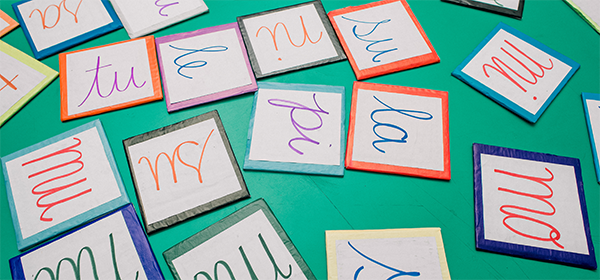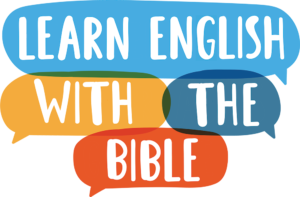
How Syllables Relate to Spelling
This is the fourth article in our 5-part series on how to teach English spelling. Click here to read the main article.
What Are Syllables?
Syllables are the building blocks of words. Syllables break words into smaller chunks, so they are easier to spell, read, and pronounce.
In the previous article on teaching the alphabet, we talked about how rules are essential to help us navigate complex systems like language. Syllables are a part of this system, and they have their own set of rules. Learning syllable rules can help students spell and read better.
First, we’ll peek back in time and see how syllables were organized into six types by Noah Webster. Then, we’ll look at how knowing the syllable types can help your students spell better. Finally, we’ll see how understanding syllable stress can also help students spell.
Noah Webster's Speller
Noah Webster, in his book Webster’s Speller (also called the Blue-Backed Speller because of its bright blue cover) taught children to spell by drilling them in syllables. The book consisted of pages of single syllables which the children would memorize both by seeing the syllable spelled and by hearing it spoken. He divided written syllables into 6 basic forms. (There is a separate system for spoken syllables, but for this article we’ll focus on the written forms.)
For example, students would see the syllables ab, eb, ib, ob, and ub. They would read the rule that syllables ending in a consonant have a short vowel sound. In this way, they would relate the sound they heard to the spelling they saw in the book.
In a nutshell, Webster taught spelling by sound. Students that memorized his book of spelling were able to read and spell years above their grade level by focusing on how syllables relate to spelling.
Just for fun, If you’d like to watch a 20-minute video on using Webster’s speller, click here to go to www.thephonicspage.org.
The Six Syllable Forms
Syllables have 6 basic written forms, formalized by Noah Webster in 1809.
- Closed syllables
a syllable with a short vowel, spelled with a single vowel letter and ending in one or more consonants. Nearly 50% of English syllables use this common pattern. - Vowel-Consonant-e (VC-e) syllables
a syllable with a long vowel followed by a consonant then silent e - Open syllables
a syllable that ends with a long vowel sound, spelled with a single vowel letter - Vowel Team Syllables
syllables with long or short vowel spellings that use two to four letters to spell the vowel - Vowel-r syllables
a syllable with a vowel ending in r. Also called r-controlled vowels. The vowel pronunciation often changes before the r. - Consonant-le (VC-e) syllables
unaccented final syllable that contains a consonant before l, then silent e
It would take time for your students to learn the syllable forms the way Webster’s students did. However, the basic information about the forms of syllables can help students understand how syllables relate to spelling. It will be easier for them to correctly spell what they hear.
For more information on the six syllable types, check this article by Louisa Moats at ReadingRockets.org.
How Do Syllables and Spelling Relate?
Webster’s emphasis on the six syllable patterns helps students learn to spell by helping them recognize vowel-consonant patterns that can help them not only in spelling, but in pronunciation.
Here’s an Example – When Does a Word Need a Double Consonant?
For example, students who know the syllable types can more accurately guess if a word will have a double consonant or not. The word “table,” has two syllables. The first syllable is open and ends with a long vowel, and the second is a consonant-le syllable. Ta-ble.
Next, the word “bubble” also has two syllables. Since the first syllable contains a short u, that probably means it is followed by a consonant, so the first syllable is b-u-b. The second syllable follows the consonant-le sound pattern in the same way as “table,” spelled b-l-e. Because of the syllable rules, we know that “bubble” has a doubled letter, but “table” does not.
Identifying Syllables
If your students need help in recognizing syllables, ask them to put their hand on their chin and say “congratulations.” Have them count how many times their hand drops. For con-gra-tu-la-tions, their hand should drop five times for five syllables. Have them also notice that each syllable contains a vowel sound.
You could also ask them to clap out the syllables of a new word. When they are able to say one syllable at a time, they can recognize the syllable patterns and spelling becomes much easier.
Prefixes and Suffixes
Teaching students how to spell the standard prefixes and suffixes will help them immensely when they have to spell multisyllable words like “beautiful” and “uncomfortable.” So many English words are created in this way from a single base word that you can unlock your students’ vocabulary by leaps and bounds by teaching them prefixes and suffixes. When they see how those short syllables relate to spelling, writing those long words should also be easy!
Syllable Stress Patterns and Spelling
Finally, let’s take a quick look at how recognizing syllable stress patterns can also help students spell better.
Overall, primary stressed syllables tend to be louder and longer than unstressed syllables, so they typically contain consonant clusters and long vowel sounds, either single or doubled (repeat, frighten). Unstressed syllables tend to contain r-controlled vowels (doctor, caterpillar). By identifying the stressed syllable(s) in a word, learners can better understand a word’s pronunciation, and from there, its spelling.
Not Perfect, But Helpful
English has more than its share of irregular spellings and pronunciations, so the rules don’t always apply. But if your learners learn the six basic syllable types, they will have more confidence in their ability to spell in English.
